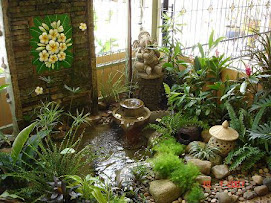Nevada Fall Gardening Checklist
By Mark Hostetler
There are certain challenges when gardening in the Nevada climate, but don't despair; it doesn't mean you can't have a lush green lawn filled with vibrant annuals or spring bulbs. There are however, some maintenance and planting tips that need to be considered during the autumn months.
Here is a handy checklist for those fall gardening to do's:
Reseeding lawns - The hot summer temperatures can do a lot of damage to a lawn; late September is an ideal time for reseeding and repairing that damage. Make certain you don't purchase bargain varieties of lawn seed, such as Kentucky 31 or K31. Most people are disappointed with this grass due to its coarse texture.
A year round green lawn can be obtained by over seeding it with perennial ryegrass versus annual ryegrass.
Give your lawn one last feeding using a fertilizer containing potassium and cut back watering your lawn to once a week in the winter months.
Colorful annuals - Believe it or not, autumn planting is the time to get the most color and longevity from your annuals in the Las Vegas area. They thrive in the milder climate and with some loving care may bloom again next spring.
Here are some ideas for cool-season annuals:
African daisies, alyssum, asters, baby's breath, bachelor buttons, bells of Ireland, calendulas, candytuft, carnations, clarkia, columbine, delphinium, dianthus or sweet William, gaill ardia, hollyhock, larkspur, nirembergia, pansy, petunia, poppies, snapdragons, statice, stocks, sweet peas, verbena, viola, ornamental kale and cabbage.
Compost for your bedding plants - Our dry soil is scarce in organic matter, which needs to be supplemented in the form of compost or peat moss. It provides much needed drainage and oxygen as well as feeding nutrients to the plants.
A recipe for a healthy garden includes:
Spreading 3 to 4 inches of some form of organic material on the bed.
Add two to three pounds of 16-20-0 fertilizer and equal amounts of sulfur per 100 square feet. Work ingredients into the top 8 to 10 inches of the soil with a spade or rototiller.
Get those bulbs planted - Nothing is more uplifting on a cold winter day, then looking out and seeing a bed of brightly colored tulips providing hope for spring. Late October is the time to get those bulbs in the ground while the soil is cool. Normally these bulbs thrive in areas where the ground has been chilly for a long time, but this is a condition we can simulate. Place the bulbs in a paper bag and store them in your vegetable crisper for four to six weeks before planting.
Prepare your beds using plenty of organic matter and ensuring you have good drainage. Once they have bloomed, mulch with at least 2 inches of well-rotted manure. Don't forget that our winter temperatures may be quite warm, just make certain to occasionally dig into the soil to test it for moisture, they may need watering.
Roses - After the fall blooming is over, trim back the canes using a 45 degree angle cut, by about one-third. Do any heavy pruning in the early spring.
Garden clean-up - Make certain to compost any dead vegetables or foliage and rake up any fallen leaves.
Garden tool tune-up - Now is the time to ensure your tools are ready for next spring. Wash them off, sand down the wooden handles and metal parts, wiping them with an oiled rag to prevent rust. It's a bit of a chore, but you'll be glad you took the time.
Gardening in Nevada has its challenges, but a little bit of tender loving care at this time of year will result in happy, healthy plants next spring.
Article Source: http://www.Free-Articles-Zone.com



No comments:
Post a Comment